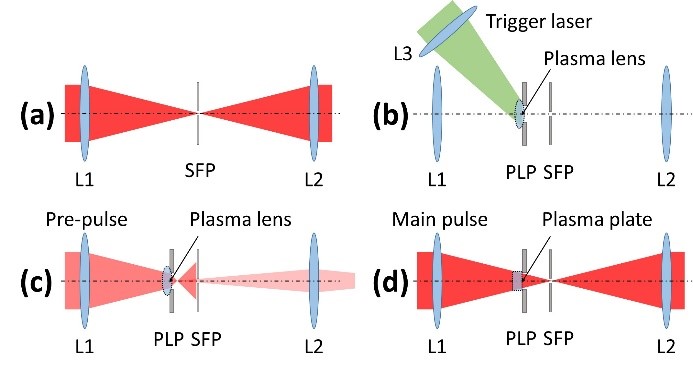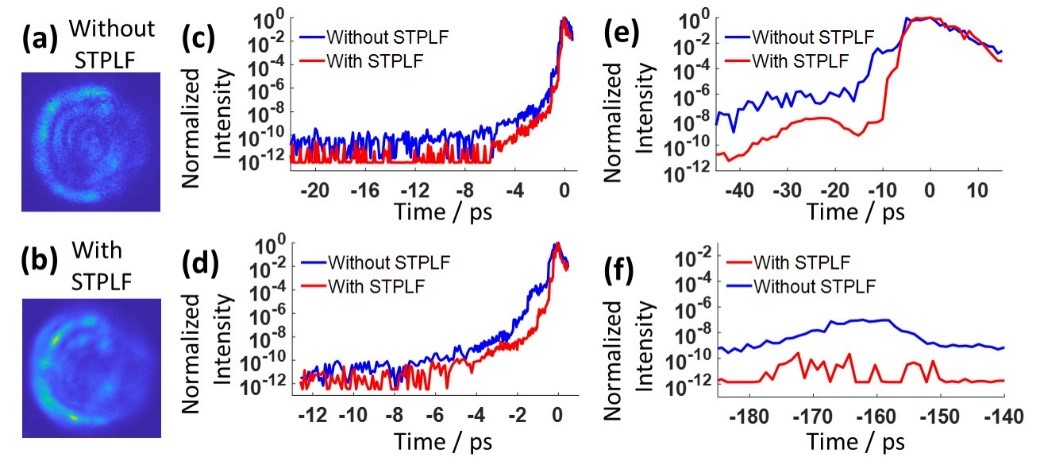The high-power ultrashort pulse lasers have become increasingly important in various research fields. High contrast is one of the most important properties of ultrashort pulses since the prepulse noise will destroy the target and negatively affect the laser-matter interaction experiments. Therefore, contrast enhancement is of great importance for high-power ultrashort pulse lasers.
Recently, researchers from Shanghai Institute of Optics and Fine Mechanics, Chinese Academy of Sciences (SIOM, CAS), and Hebrew University of Jerusalem have reported a novel temporal contrast enhancement device, which was called the spatiotemporal plasma-lens filter (STPLF). The results were published in Optics Letters.
STPLF combines the concept of plasma optics and a spatial filter and uses a trigger laser to generate a spatiotemporal plasma lens to enhance the temporal contrast of high-power ultrashort laser pulse. It works in such a way that, for relatively low intensity noise, STPLF disperses the propagating beam with high loss by the plasma lens. While the main high intensity pulse arrives, the rising edge of the laser pulse can destroy the plasma lens and STPLF will act as a regular spatial filter with low loss and also improve the spatial quality.
Researchers performed the demonstration experiments using the SG-II 5PW laser system. STPLF improved the temporal contrast by two orders of magnitude with 80% laser transmission efficiency under 1Hz repetitive laser operation and the spatial profile quality. The results showed STPLF’s capability of temporal contrast enhanced with significant pre-pulse reduction and rising edge steepening.
Given the above analysis, this new device has the potential of improving the spatiotemporal quality of high repetition and high power ultra-short lasers in the future.
This work is supported by International Partnership Program, President’s International Fellowship Initiative of CAS, the Strategic Priority Research Program of CAS, and Shanghai Sailing Program.

FIG. 1 schematic diagram of a spatiotemporal plasma-lens filter. (Image by SIOM)
FIG. 2 improvement performances of a spatiotemporal plasma-lens filter. (Image by SIOM)
Article Website:
https://doi.org/10.1364/OL.388391
Contact:
Mr. CAO Yong
General Administrative Office
Shanghai Institute of Optics and Fine Mechanics, CAS
Email: caoyong@siom.ac.cn